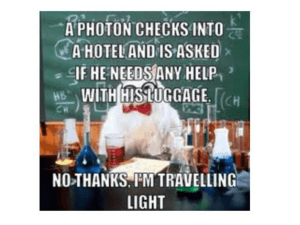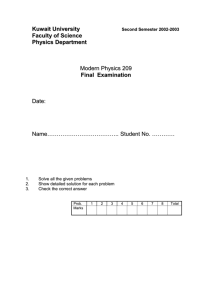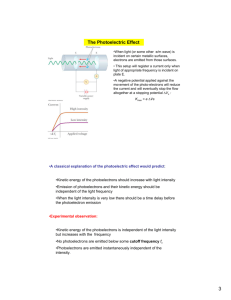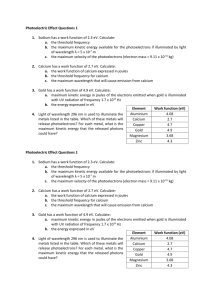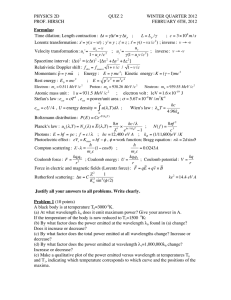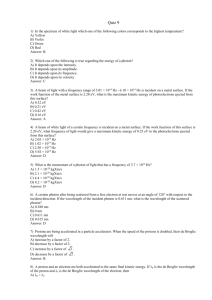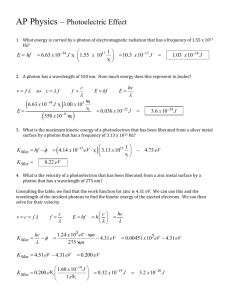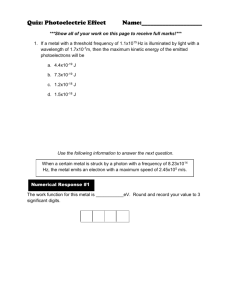Assignment 13 Solutions - Stage-2
advertisement
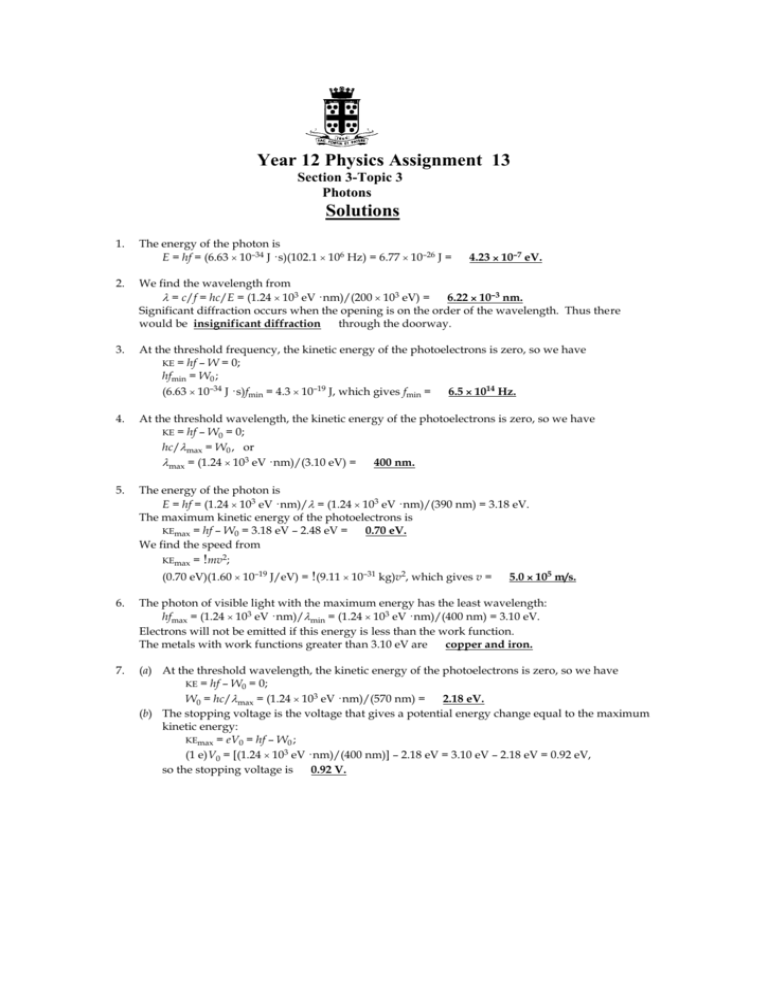
Year 12 Physics Assignment 13 Section 3-Topic 3 Photons Solutions 1. The energy of the photon is E = hf = (6.6310–34 J · s)(102.1106 Hz) = 6.7710–26 J = 4.2310–7 eV. 2. We find the wavelength from = c/f = hc/E = (1.24103 eV · nm)/(200103 eV) = 6.2210–3 nm. Significant diffraction occurs when the opening is on the order of the wavelength. Thus there would be insignificant diffraction through the doorway. 3. At the threshold frequency, the kinetic energy of the photoelectrons is zero, so we have KE = hf – W = 0; hfmin = W0 ; (6.6310–34 J · s)fmin = 4.310–19 J, which gives fmin = 6.51014 Hz. 4. At the threshold wavelength, the kinetic energy of the photoelectrons is zero, so we have KE = hf – W0 = 0; hc/max = W0 , or max = (1.24103 eV · nm)/(3.10 eV) = 400 nm. 5. The energy of the photon is E = hf = (1.24103 eV · nm)/ = (1.24103 eV · nm)/(390 nm) = 3.18 eV. The maximum kinetic energy of the photoelectrons is KEmax = hf – W0 = 3.18 eV – 2.48 eV = 0.70 eV. We find the speed from KEmax = !mv2; (0.70 eV)(1.6010–19 J/eV) = !(9.1110–31 kg)v2, which gives v = 5.0105 m/s. 6. The photon of visible light with the maximum energy has the least wavelength: hfmax = (1.24103 eV · nm)/min = (1.24103 eV · nm)/(400 nm) = 3.10 eV. Electrons will not be emitted if this energy is less than the work function. The metals with work functions greater than 3.10 eV are copper and iron. 7. (a) At the threshold wavelength, the kinetic energy of the photoelectrons is zero, so we have KE = hf – W0 = 0; W0 = hc/max = (1.24103 eV · nm)/(570 nm) = 2.18 eV. (b) The stopping voltage is the voltage that gives a potential energy change equal to the maximum kinetic energy: KEmax = eV0 = hf – W0 ; (1 e)V0 = [(1.24103 eV · nm)/(400 nm)] – 2.18 eV = 3.10 eV – 2.18 eV = 0.92 eV, so the stopping voltage is 0.92 V.
